Don't wanna be here? Send us removal request.
Text
Techniques and methods of animation
Pixilation
Pixilation has been around since early film. Pixilation didn't really take off though until the 1950s with a man named Norman McLaren who created Neighbours. The film reflects anti-war themes through two feuding neighbors, and using pixilation makes it take place in our own world, if not a more exaggerated one.
One of the most prominent animators working today with pixilation is the animator PES. He was oscar nominated for the short film Fresh Guacamole which shows a traditional stop motion in a fun and creative way. Pixilation not only has had a big role in the world of independent animation.
Claymation
Each object or character is sculpted from clay or other such similarly pliable material as plasticine, usually around a wire skeleton and then arranged on the set, where it is photographed once before being slightly moved by hand to prepare it for the next shot, and so on until the animator has achieved the desired amount of film.
Producing a stop-motion animation using clay is extremely laborious. Normal film runs at 24 frames per second.
The object must not be altered by accident, slight smudges, dirt, hair, or dust as it would disturb the way the film is shot. Feature-length productions have generally switched from clay to rubber silicone and resin cast components. Nevertheless, clay remains a viable animation material where a particular aesthetic is desired.
Puppet Animation
Puppet animation is a development from abject animation where puppets are used. Puppets were used in stop motion as it can be make freely and more easily than other animations. The puppet animation is most commonly used in children cartoons and films. The target audience for this type of animation would be mainly teenagers and adults because of the dark themes .
Cel animation
A cel, short for celluloid, is a transparent sheet on which objects are drawn or painted for traditional, hand-drawn animation. With the advent of computer-assisted animation production, the use of cels has been all but abandoned in major productions. Disney studios stopped using cels in 1990 when Computer Animation Production System replaced this element in their animation process, and in the next decade and a half, the other major animation studios phased cels out as well.
Rotoscoping
Rotoscoping is an animation technique that animators use to trace over motion picture footage, frame by frame, to produce realistic action. This could be done by having the next action that is meant to happen in the next frame and then rapidly moving the pictures.
3 notes
·
View notes
Text
Stop Motion Animation-History
The magic lantern was made in 1603, it is an image projector using pictures on the sheets of glass, some sheets contain moving parts. It is considered the first example of project animation.
In 1824, the Thaumatrope housed a rotating mechanism with different picture on each side. When rotated, you saw a combined picture. The Thaumatrope is a Victorian toy constructed from a simple disk or card featuring a different picture on each side and attached to two pieces of string. When the strings are twirled rapidly the card rotates on its axis and the two images appear to combine. Invented by John Ayrton Paris (1785-1856), an English physician, in 1825, the Thaumatrope was the first instrument to exploit the persistence of images on the retina. Paris’s Philosophy in sport made science in earnest, first published in 1827, expounded his belief that scientific learning in children could be stimulated through a combination of amusement and instruction, using demonstrational toys such as the Thaumatrope.
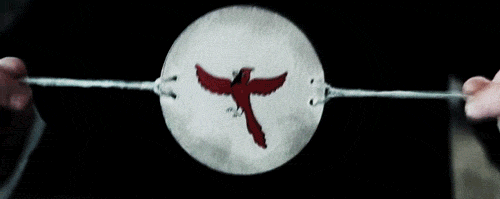
In 1831, the phenakitoscope feature spinning disks reflected in mirrors that made it seem like the pictures were moving.
The optical toy, the phenakistoscope, was an early animation device that used the persistence of vision principle to create an illusion of motion. It was invented by Joseph Plateau in 1841.The phenakistoscope used a spinning disc attached vertically to a handle. Arrayed around the disc's center were a series of drawings showing phases of the animation, and cut through it were a series of equally spaced radial slits. The user would spin the disc and look through the moving slits at the disc's reflection in a mirror. The scanning of the slits across the reflected images kept them from simply blurring together, so that the user would see a rapid succession of images that appeared to be a single moving picture. A variant of it had two discs, one with slits and one with pictures; this was slightly more unwieldy but needed no mirror. Unlike the zoetrope and its successors, the phenakistoscope could only practically be used by one person at a time.
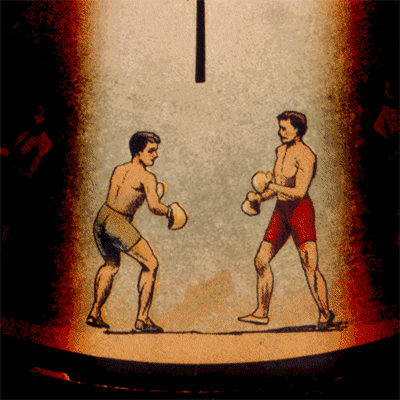
In 1834, the zoetrope was a hollow drum that housed images on long interchangeable strips that spin and made the images appear to move.
The zoetrope , invented in 1834 by William George Horner, was an early form of motion picture projector that consisted of a drum containing a set of still images, that was turned in a circular fashion in order to create the illusion of motion. Horner originally called it the Daedatelum, but Pierre Desvignes, a French inventor, renamed his version of it the zoetrope (from Greek word root zoo for animal life and trope for "things that turn.")
A zoetrope is relatively easy to build. It can be turned at a variable rate to create slow-motion or speeded-up effects. Like other motion simulation devices, the zoetrope depends on the fact that the human retina retains an image for about a tenth-of-a-second so that if a new image appears in that time, the sequence was seem to be uninterrupted and continuous. It also depends on what is referred to as the Phi phenomenon, which observes that we try to make sense out of any sequence of impressions, continuously relating them to each other.

In 1868 the flip-book, also known as the kineograph, reached a wise audience and it credited with inspiring early animators more than the machines developed in this era.
A flip book is a collection of combined pictures intended to be flipped over to give the illusion of movement and create an animated sequence from a simple small book without machine.
Very popular at the end of 19 th century and the beginning of 20 th century, but still produced today, flip book is the American name even used in France, more often than its French name folioscope. British people call it flick book or flicker book; in Germany Abblätterbuch (books to be flipped through) in the 19 th century and then Daumenkino : “thumb cinema”, name that we also find sometimes in the US at the beginning of 20 th century (also called thumb book) as well as less usual names such as flip movie, fingertip movie, riffle book, living picture book or hand cinema.
Some authors compared the flip book to the Magic Book or Blow Book, a fashionable kind of books in 19 th century that allowed animations or optical illusions. Actually, the only common point is that they both use the principle of animation. The actor and historian of magic, Ricky Jay, is the author of a great work devoted to these small books

In 1877, the praxinoscopre expanded on the zoetrope, using multiple wheels to rotate images. It is considered to have shown the first prototypes of the animated cartoon.
The Praxinoscope is a typical optical toy from the 19th century. It consists of a cylinder and a strip of paper showing twelve frames for animation. As the cylinder rotates, stationary mirrors in the centre reveal a ‘single image’ in motion. The Praxinoscope was invented in 1876 by Charles-Émile Reynaud (1844-1918), a Paris science teacher, who marked all his examples ‘E.R.’. The toy became a great commercial success and won recognition at the great exhibitions of the period.
The Silent Era, 1900-1930:
The Silent era happened in the early 20th century. This was the marks of the beginning of cartoons. Many animators form studios , with bray studios in New York proving the most successful of this era. Bray helped lunch the careers of the cartoonists that created Mighty Mouse, Betty Boop and Woody Woodpecker. In 1906, was the first entirely animated film, Using stop-motion photography to create action. In 1908, the first animated film using hand drawn animation, and is considered by film historians to be the first animated cartoon. In 1919 Musical Mews and Feline Follies introduces Felix the Cat- Often considered the first animated star.
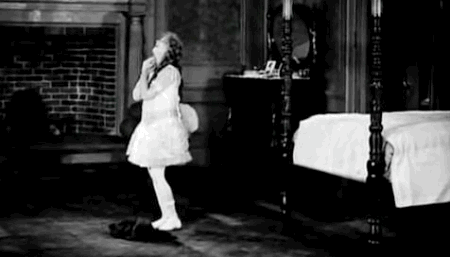
in 1928, Steamboat Willie made a cartoon which was the first cartoon with sound printed on the film, and is the first noble success for Walt Disney Studios.
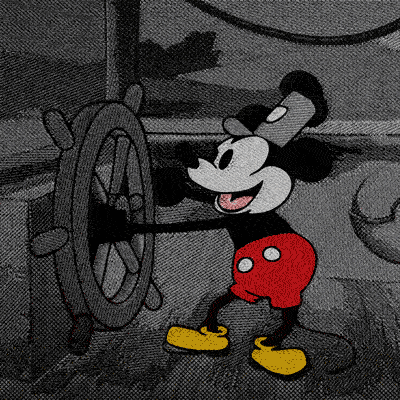
The Golden Age of American Animation, 1930-1950s:
During what many consider to be the “Golden Age” of animation, theoretical cartoons became integral part of popular culture. These years are defined by the rise of Walt Disney, Warner Brothers, MGM and Fleischer.
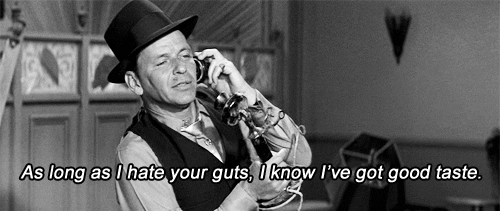
In 1930, Warner Brother Cartoons was funded and created the Merrie Melodies series.

In 1937, Walt Disney releases Snow White and the Seven Dwarfs, the first animated feature to use hand-drawn animation.

The American Television Era, 1960-1980s:
The animation industry began to adapt to the fact that television continued its rise as the entertainment medium of choice for American families. Studios created many cartoons for TV, using a “limited animation” style. By the mid 80s, with help from cable channels such as The Disney Channel and Nickolodeon.
In 1960, Hanna Berbera releases The Flintstones, the first animated series on prime time television.
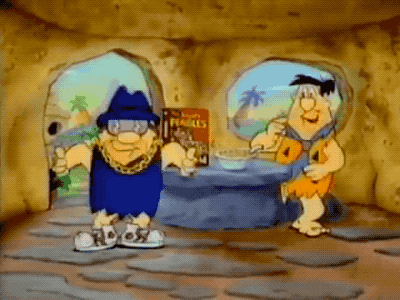
In 1961, The Yogi bear Show, a spin off of huckleberry hound debuts on national TV.

In 1963, DePatie-Freleng Enterprises wins the Academy Award for Best Short Film for The PinkPhink and continues to create shorts for theoretical release.
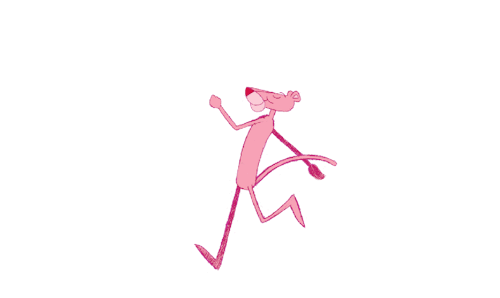
In 1964, Flitz the Cat is release- the fist animated adult feature film
Modern American Era, 1980-2014
The CGI (computer generated imagery) revolutionized animation. A principal difference of CGI animation compared to traditional animation is that drawing is replaced by 3D modeling, almost like a virtual version of stop-motion. A form of animation that combines the two and uses 2D computer drawing can be considered computer aided animation.
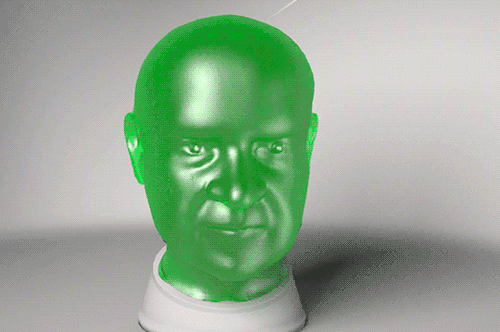
In 1984, The Adventues of Andre and Wally B was the first fully CGI animated film, created by The Graphics Group, the precursor to Pixar.
In 1987 The Simpsons was Made, The Simpsons is an American adult animated sitcom created by Matt Groening for the Fox Broadcasting Company. It is the longest-running American sitcom, the longest-running American animated program, and in 2009 it surpassed Gunsmoke as the longest-running American scripted primetime television series.
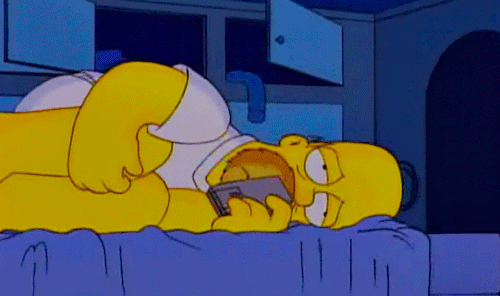
In 1995, Toy Story was the first fully computer animated feature film, was released.
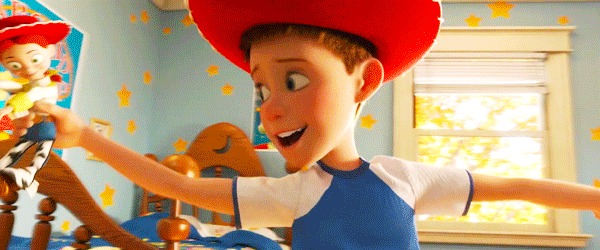
In 2014, Big Hero 6 is the fist Disney animated film to feature Marvel Comic characters.

3 notes
·
View notes
Text
Action Film
Action film are quite popular in today’s time to everybody. The quick pace and the action would interest the audience and would make them watch more of the film.
Narrative:
Action films use narrative structure to keep the high pace action and adrenaline that the audience would feel. This will help the audience understand the action that takes place during the film, there’s usually a clear bad guy in the film and there are a couple hero’s as they might be in a team for example in ’Ride Along’ James and Ben are the hero’s and help find Omar, the villain, Furthermore, they also found two guys that are meant to be good working for Omar. This could be the same idea in ‘Die Hard’ as that also is an action film that I had analysed.
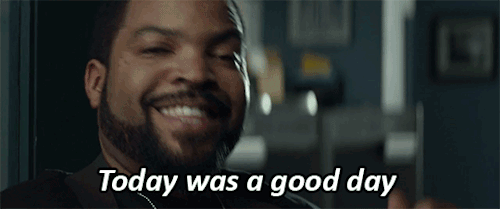
Characters:
The characters need to have the right appearance for the films such as in ‘Ride Along’ James (the veteran cop) goes with the stereotypical detective as they usually wear dark clothes and sunglasses, also he is in a black car with dark tinted windows which usually detectives have so they don’t get their cover blown. This would go with Propp's theory as James could be the hero in some parts of the film as he might have saved Ben's life a couple times. James is an emotionless hot-headed risk taking officer who would do anything to get to Omar. This could also be seen in ‘Die Hard’ as John McClain is seen as a detective through his use of mise-en-scene. He wears a casual vest and carries a police badge around with him. He murdered the villains brother and now he wants revenge on John. His Marriage isn't the best in the world as they live far away from each other and John describers her to be ‘short tempered’. McClain is portrayed to be a hero who, with little or no assistance from others still manages to get the job done.

Mise-En-Scene: For ‘Die Hard’ and ‘Ride Along’
Die Hard:
The location is set in New York which is very popular and wealthy area where it would be best to do the plot as Simon tries to rob a bank and run away with gold worth billions of dollars. New York is known for its bright colours and very tall buildings which could be used later on in the movie to convey the size of New York.
The costumes are also very important as it shows the audience what is happening within the film. e.g when Simons ‘army’ wore police costumes to make sure no one was suspicious of them. This would help the audience understand what type of people they actually are.
props are very important as it shows what type of genre the film is such as guns would show that it is an action film and not an adventure. The props such as the police badges divide the cast into good people and bad people, this gives the audience an idea on who the characters actually are
Ride Along:
Atlanta , USA.
The location of the film could be shot in Atlanta as there might is a high crime rate as the characters are police officers. We know they are police officers by their uniforms and also we know James is a detective with by his blacked out car and the way he acts.
The props used would show the genre also as there are guns and police badges that the characters hold. This would help with the plot of the film as it gives the audience a clear idea of what the film is about.
Camera Techniques:
Die Hard:
The camera angle allows the film to show the audience what is actually happening. Shots such a crane shots show the setting, eg when Simon was in the bank a crane shot was used to show the location and where he is. Cameras can move at the same pace of a car to show the action in the film such as a car chase. This will help the audience get a better understanding of the genre of the film.
Camera shots on the bonnet of the car would help with the expressions on the characters faces and might help the audience know what they are feeling, this is seen when there is a car chase and guns are being fires at one another. The bonnet camera angle allowed the audience to see Zeus’ face as he is scared of getting shot. To help with the car chase. A vehicle mounted camera would help with the genre of the film as it makes it more action based and also help the audience get a better understanding of the situation.
The movement of the cameras would be shaky as they were hand-held and showed that the car was actually moving during the chase. A Jib can be seen when McClain and Zeus were looking over the bridge at the boat that had the gold that was stolen on board, this would help as it shows the situation and also the height that the main characters has to fall to get onto the ship.
Ride Along:
Shots mounted on vehicles in the car chase to increase the action genre. This will give the audience a better understanding of what is happening during the opening scene.
Close up to see the emotion of James when Ben chases him outside of his house to ask for his approval of marrying his sister.
Shot reverse shot to shot between conversations between the characters.
P.O.V show when Ben Barber is on the hospital bed looking at James and the doctor talking to each other. There is a bit of sway on the camera from the angle. This angle shows that Ben has lost a lot of blood as it is disoriented so it shows he is losing consciousness.
A jib camera is used in the main fight scene where the deal was going on. This is used to show the scale of the fight and to show how many people are there. It also allows the audience to see the location the fight is taking place as it is in a warehouse.
1 note
·
View note
Text
Narrative structure:
Todorov’s Narrative Theory:
Tzvetan Todorov's narrative theory suggests that all narratives follow a three part structure where they begin with equilibrium, where everything is balanced, progress as something comes along to disrupt that equilibrium, and finally reach a resolution, when equilibrium is restored.
Most of Todorov's theory can be used during all types of genres. For example ‘Hush’ which is a horror, crime:
Equilibrium: The story starts of calm and collective where the characters are introduced to let the audience know what is happening and the relationship between them.
Disruption: The ‘man’ murders Maddie's best friend in front of her house which would introduce a new character.
Resolution: Maddie finds a way to kill the man while being in the house.
New equilibrium: Maddie calls the police while sitting on her porch covered in blood while stroking her cat.

Barthes’ Theory:
Roland Gérard Barthes was a French literary theorist, he explored a diverse range of fields and he influenced the development of schools of theory including semiotics and anthropology. Barthes suggested there will be more than one of five codes that describe the meaning of a text.
Barthes’ theory can be seen in the film ‘Die hard’:
1-There is a call from an unknown caller, it makes the audience wonder who is on the other side of the call and why are they calling
2-There is a explosion at the substation, it makes the audience wonder who placed the bomb and why did they place the bomb
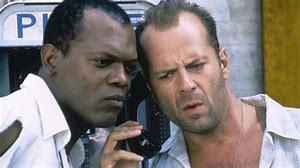
Plot devices:
Plot devices are one of the main reasons why films are successful. It makes sure that the audience doesn't get bored and makes them want to watch more. This will help the director get to a certain plot he wants to let the audience see what is happening.
Plot Twist:
A plot twist is a literary technique that introduces a radical change in the direction or expected outcome of the plot in a work of fiction. When it happens near the end of a story, it is known as a twist or surprise ending
The MacGuffin:
The MacGuffin is a plot device in the form of some goal, desired object, or another motivator that the character pursues, often with little or no narrative explanation.
Duex Ex Machina:
Unexpected power or event saving a seemingly hopeless situation, especially as a contrived plot device in a play or novel. It is mostly by an electronic device.
Red Herring:
When the character is presented as a villain but at the end of the film or play the character ends up being good. This is because the main characters describe him in a bad way so it makes the audience think that the character is bad
In Media Res:
The middle of the story is shown at the start, we are then shown the actual start and the events that lead to the middle.
1 note
·
View note
Text
Horror Film
Horror films are one of the most popular genres for all types people.The use of the setting and character briefs have allowed the producers to draw attention to a certain point that they are trying to get to.
Narrative:
A story is a series of events recorded in their chronological order. A plot is a series of events deliberately arranged so as to reveal their dramatic, thematic, and emotional significance. A story is boring. But a plot is someone's telling of the story.
Horror films use narrative structure to engage the audience and to make them watch more of the film. This is to tell the audience whats happening in the film and to let them know which character is which, which would link to Levi-Strauss and the theory of binary opposites where there is a hero and villain. They use plots to also make the audience more engaged as jump scares might happen or a plot twist which no one might have been expecting. This can be seen in the films Hush and The Good Neighbor that we had to analyse.
Characters:
An example of this is in the film Hush where the Main character, Maddie ,is deaf and certain techniques are used to make the audience think this, this is used by muting all the sound while spectating Maddie doing a certain task such as cooking. This will show the audience what Maddie is hearing, allowing them to believe that she is deaf. This could also be seen in the film The Good Neighbor where certain features make the old man look scary and a bit insane, blue filters are used to make the old mans house look not normal and look cold which could signify the old mans personality. The red herring theory can be seen in The Good Neighbor as the old man is not the ‘villain’ but he is just an ordinary man when he is seen as a bad guy through the characters descriptions.

Mise-En-Scene:
Mise-en-scene is an important feature to the horror genres. This is because it allows the audience to understand the setting and what type of genre it is. The setting can introduce the start of the film as it will tell the start of the film through just the location. This can be seen in Hush where Maddie lives in the middle of the woods which would show the audience that she is isolated as no-one is around her. While in The Good Neighbor the setting is based in the american sub herbs which could show that the main characters are teenagers.
Hush:
The scene is set in a forest to make it more isolated, also you mostly see forests in the horror genre because it is hasn’t to be scary.
The costumes of the characters would show the genre of the film as the man is wearing a mask and the bodies of both characters at the end of the film are bloody and scarred. The colours of the costumes are dark because of the low key lighting also they are not meant to be bright as nothing happy was happening only dark things are happening in the scenes.
The props used would signify that it is in the horror genre with the knives and crossbows. The low key lighting in the setting would increase the scariness and make the audience jump more often because of the high tension.
The Good Neighbor:
The old man’s house creates a scary atmosphere, this is because the boys have described the old man in a certain way. It is dark to connote the type of person the man is form the description of Ethan and Sean. The low key lighting would also cannot the description of the old man as barely nothing can be seen in the house.
The costumes of the characters are quite casual for Sean and Ethan as they are teenagers in the film and still attend education. We see Ethan is part of a normal high school as they do not have to wear uniform and only casual clothes
1 note
·
View note
Text
Introduction
This blog is going to be talking about the codes and conventions of fictional films. I am going to inform you about the narrative and the stylistic codes that are used within the films. There are multiple genres of films so there would be a range of codes that I am going to inform you about.
I will also be telling you the features of the different genres and give you examples from two different genres that I have analysed and tell you the reasons why certain techniques are used.
1 note
·
View note